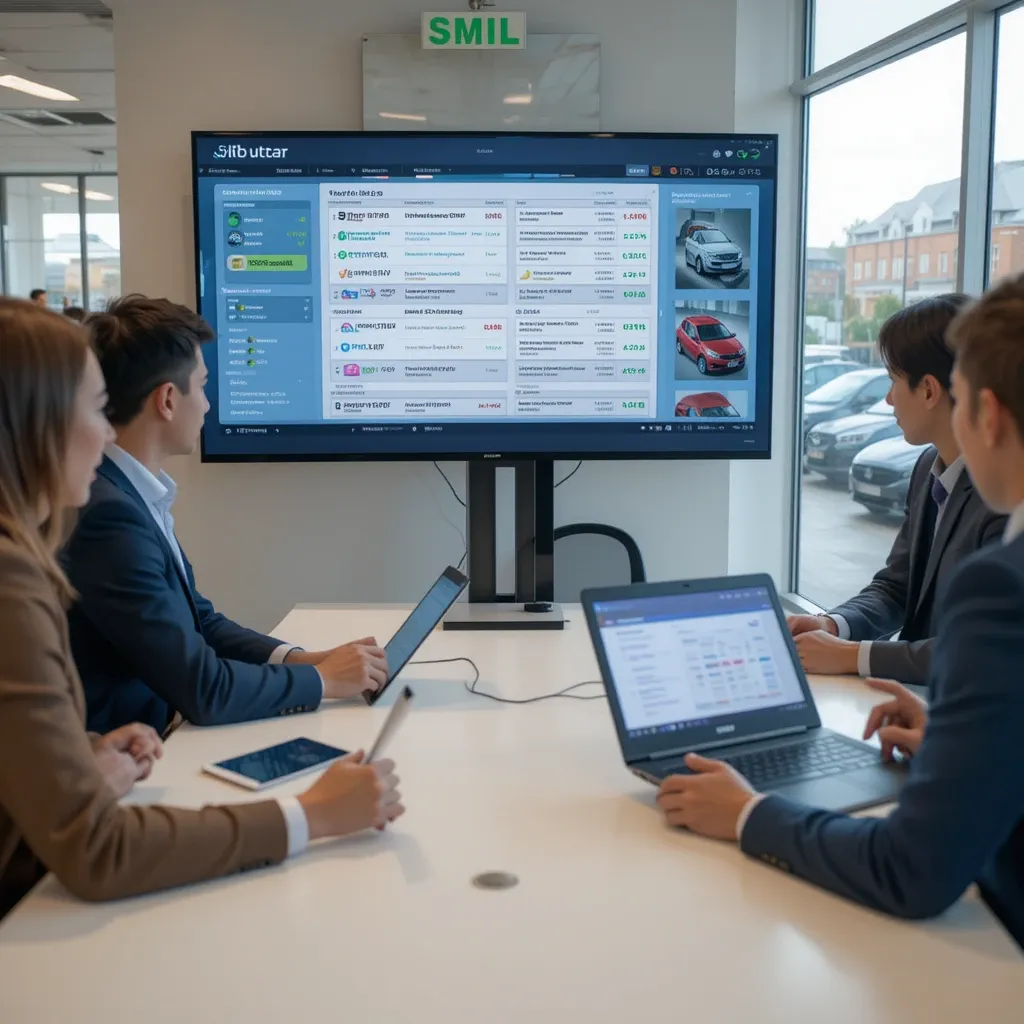
Digital Vehicle Bidding Platform: Choosing the Best for Your Dealership
1. Why Your Dealership Needs a Digital Bidding Platform
The traditional cycle of preparing stock, posting ads, fielding enquiries, and hoping for a sale is no longer enough. A digital vehicle bidding platform transforms this outdated routine into a streamlined and powerful engine for growth and efficiency.
These systems give you:
• A central hub to list, manage, and auction vehicles
• Live bidding and automated reserves to maximise margin
• Full analytics on buyer activity, listing performance, and pricing trends
• The opportunity to own your branding and buyer relationships
No more relying on third-party auction houses or surviving on hope—you get control, speed, and data-driven scaling.
2. Defining the Digital Vehicle Bidding Platform
At its core, a digital vehicle bidding platform is a dealer-controlled, online auction environment. Features typically include:
• User dashboards displaying live bids, lot summaries, and countdown timers
• Vehicle listings with full specs, imagery, video, and inspection reports
• Tools for setting reserves, start times, and fees
• Buyer verification to restrict participation
• Notification and reminder systems
• Analytics and reporting to support decision-making
These platforms can operate in timed, live, or hybrid formats. Crucially, they prioritise dealer branding and control—making them indispensable for forward-thinking businesses.
3. Key Features That Matter Most
When evaluating platforms, ensure the solution delivers:
A. Branded User Experience
Fully customisable branding—colour schemes, logo, messaging—reinforces your authority and trust. Buyers should immediately know they’re in your environment, not a third-party site.
B. Multi-Listing Upload
Scalable dealers need batch uploads via CSV or VIN lookup tools. Upload dozens of vehicles at once, then enrich them with specs, images, and auction parameters.
C. Auction Management Interface
Organise auctions with:
• Countdown timers
• Anti-snipe extensions
• Automated start/stop
• Detailed lot status reports
The goal is a frictionless auction that maximises competition.
D. Buyer Functionality
Support buyers by offering:
• Secure login and ID verification
• Reserved pricing
• Favourite lists and notifications
• Real-time bidding charts
These features keep buyers engaged and bidding.
E. Analytics & Reporting
Early metrics drive performance. Key dashboards include:
• Listing impressions and views
• Bid activity per unit
• Days-on-platform
• Conversion and sell-through rates
• Margin tracking
This data fuels smarter buying, pricing, and preparation decisions.
4. Evaluating Scalability: Planning for Growth
A scalable SaaS platform supports your future, not just your present.
Grow-with-you features include:
• Unlimited stock volume
• Multi-user access
• API integration with DMS and CRM systems
• Modular components like transport coordination or inspection
• Auto-reserve adjustments via AI
• Seamless upgrades as business grows
Your platform should scale effortlessly.
5. Sample Comparison Table
6. Benefits of Going White-Label
If you’re serious about growth, white-label platforms are game-changers:
• Your branding stays front and centre
• Buyers trust your dealership, not a third party
• Complete data access, no limits
• Infinitely scalable under your control
This setup lets you build a long-term asset, not just another auction cycle.
7. Choosing the Right Auction Style
Not all auctions are created equal. Choose formats based on stock type:
• Timed: Ideal for setting a cycle and pushing volume
• Live: Great for premium or high-demand vehicles
• Hybrid: Capture broad reach with timed auctions, intensify attention using live features
Mix and match styles as you learn what your market responds to.
8. Integration Considerations
Match your platform with the rest of your tech stack:
• DMS/CRM integration for data syncing
• Accounting sync for invoicing
• Inspection and transport modules
• AI-led price suggestions
• Notification triggers into email/SMS systems
A connected platform makes all the difference.
9. Buyer Success Formula
Keep buyers happy and repeatable:
• Verification builds trust
• Alerts keep them informed of bids and lots
• Watch lists help buyers monitor multiple vehicles
• Mobile-ready auction views support on-the-go activity
• Post-auction follow-up automates invoices, feedback, and collection details
Happy buyers mean repeat bidding and smoother sales.
10. Embedding the Platform in Your Ops
Run it like a business, not a novelty.
• Weekly auction planning
• Stock readiness & quality control
• Pricing strategy alignment
• Marketing drive (email, SMS, social)
• Analytics review after each auction cycle
Treat your auction as a product launch every time.
11. Measuring ROI
Track performance with these KPIs:
• Auction sell-through %
• Days-on-platform
• Average £ margin per lot
• Buyer return rate
• Bidder participation per lot
These numbers show whether the platform is working for you.
12. Planning for the Future
Expand smartly:
• Add AI tools for reserve suggestion
• Auto relist ageing stock
• Link transport or bundling services
• Open up to vetted retail buyers or run mixed auctions
• Plan mobile app extensions or API connections
Stay ahead with a future-proof setup.
Further reading:
Dealer‑to‑Dealer Car Auctions UK: The Blueprint for Self‑Hosted Platforms
The Trade Seller’s Tech Stack: AI, Chatbots and Automation in Vehicle Remarketing
Scaling Up: How Large-Scale Trade Sellers Streamline Online Disposal

